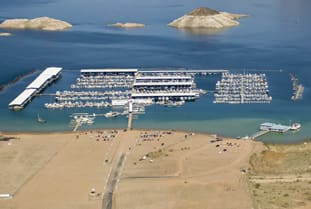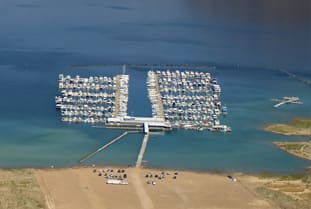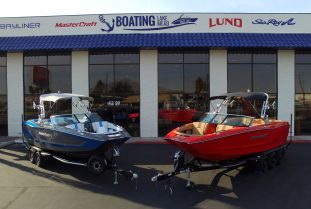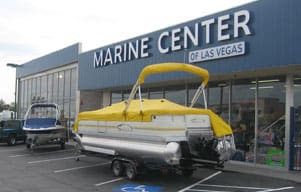Carved out of the rough terrain of the Mojave Desert, Lake Mead is America’s largest man-made reservoir. This jewel of the Southwest is overwhelming in scope, with over 550 miles of shoreline and twice the size of Rhode Island.
Its depth is impressive as well, as it stores enough water to cover Pennsylvania in a foot of water. While Lake Mead and Lake Mohave downstream are located entirely within the boundaries of the National Recreation Area, they only account for 13% of the park’s total acreage.
How did the lake come to be? Taming the mighty Colorado River was one of the reasons President Theodore Roosevelt created the Bureau of Reclamation in 1902. Three decades later, this vision was realized when the final diversion tunnels were closed in 1936. Today, the Lake Mead-Hoover Dam endeavor provides a perpetual source of water for irrigation, municipal and industrial uses, along with its primary function of flood control. Most people visiting Las Vegas would be surprised if they were told the water they drink and shower in comes from Lake Mead. While its versatility is of great importance to southern Nevada’s vibrancy, the wide varieties of recreational activities are what really draw in the masses.
Among these is fishing. In the three bodies of water that comprise the Lake Mead National Recreation Area- Lake Mead, Lake Mohave and the Colorado River- there live more than a dozen species of fish, including largemouth bass, striped bass, rainbow trout, channel catfish, crappie and bluegill.
For campers, Lake Mead offers more than a dozen diverse campsites and RV parks open year-round. For hikers, there are literally hundreds of miles of trails to explore, leading to such places as abandoned gold mines, ancient Native American encampments and villages, petro glyphs, and hideouts worthy of the notorious Jesse James. The best hiking months are October through May.
SCUBA diving is another popular endeavor for visitors. Some parts of the lake are so deep that only divers trained in deep water dives should make the effort, lest safety be sacrificed.
Of course, boating is the biggest draw, with four marinas to choose from on Lake Mead and numerous launch ramps across Lake Mead and Lake Mohave. Water-skiing and wake boarding aren’t the only things to do in the lake. Kayaking and canoeing are popular, and an ever-growing number of sailboats and sailboards thrive in the desert winds.
Clean, clear water in Lake Mead and Lake Mohave lures swimmers every summer, when lake temperatures will get over 80 degrees. Since there are no lifeguards here, water safety should always be prominent in one’s thinking.
Finally, who is the lake named after? It’s Dr. Elwood Mead, who, from 1925-36, was Commissioner of the Bureau of Reclamation, builder of Hoover Dam.



















